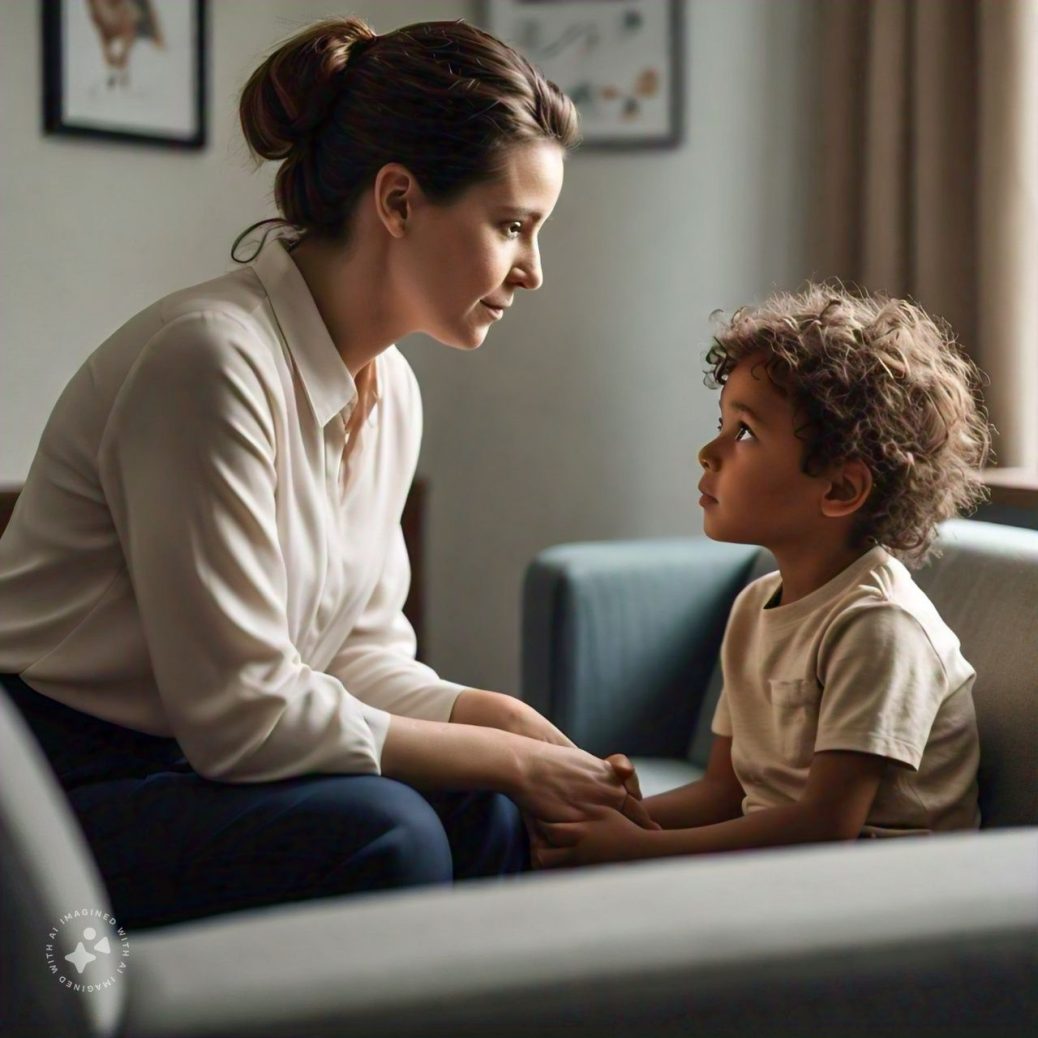Therapies for sensory issues in autistic children concentrate on improving how they process sensory input, reducing irritation and magnifying their capability to engage with their environment.
Sensory issues are common in autistic children, and they fight with understanding sights, sounds, smells, or even touches. These challenges lead them to feel overwhelmed or unease in everyday situations. By addressing sensory issues, we can make them feel comfortable and make better to understand the different environments.
Why Autistic Children Face Sensory Issues
Many therapies focus to help autistic children manage their sensory issues. These therapies include activities that choose their senses, allowing the brain to improve the sensory input process. When children regularly participate in these activities, they often become confident in handling the sensory input which they are facing.
Here are Some Therapies for Sensory Issues in Autistic Children
Here are some of the important and beneficial Therapies which can help for Sensory Issues in Autistic Children.
Occupational Therapy (OT)
How it Works: Occupational Therapy is made for children to structure to daily life situations and routine and help them in improving their ability to handle sensory information and details. It works by indulging the child in specific work that challenge and improve their fine motor skills, sensory input processing, and coordination. The therapist modify activities based on the child’s needs.
Materials and Techniques: Ordinary materials used include therapy balls, swings and brushes for sensory brushing. Weighted blankets are also used for this therapy. Techniques also include practicing for hand-eye coordination tasks, deep-pressure tasks (such as squeezing or rolling), and engaging in sensory playing. The goal is to assist child become independent with different textures, movements, and stimulation that are present in different situations.
Light Therapy for ASD Children
Sensory Integration Therapy (SIT)
How it Works: The question here is that why we use this therapy? The reason is using Sensory Integration Therapy is to increase the sensory inputs. This inputs include touch, sound, and movement in children daily life routine. It includes activities that reveal the children to many sensory experiences in a controlled and safe manner. With practice, help and time, the brain learns to handle these sensory inputs more effectively.
Materials and Techniques: Sensory integration often includes materials like trampolines, swings, crash pads, and textured objects. Techniques include swinging to improve balance, playing with textured materials to improve management of different sensations. Therapists also uses Bouncing techniques to improve awareness of new textures to the body . The therapist identify and see what is the difficulty level of the child and can measure child’s progress.
Speech and Language Therapy (SLT)
How it Works: Speech and Language Therapy is used and considered to be one of the effective therapy to resolve speech and language issues. Some children may be sensitive to sounds or struggle with social problems in communication. SLT focuses on improving their capability to comprehend and reacts to sounds, language, and social interactions.
Materials and Techniques: Tools which therapist used for this techniques are picture cards, communication boards, and sound devices. The therapist also use games, repetition, and visual supports to enhance language comprehension. They also introduce calming auditory exercises for those children who are sensitive to sound. Which help them to manage their sensory burden during communication.
Improving Speech with Therapies and Techniques
Improving Speech with Therapies and Techniques
Applied Behavior Analysis (ABA)
How it Works: Applied Behavior Analysis is a technique which focuses on positive part. Therapist encourages positive behaviors of the child, also minimize those behaviors that interferes with the learning of the child. These behaviors are often emerges when there is sensory overload. It has a reward-based system to assist the children to develop new skills and also mange their sensory sensitivities.
Materials and Techniques: ABA therapist often uses visual aids, reward charts, and timers. The therapist breaks down tasks into smaller steps and uses positive reinforcement for children like praise or give small rewards. This technique help in enhancing their progress. Techniques can involve slowly showing the child for the sensory experiences in a safe, structured way to reduce anxiety.
Newborn Sensory Overload: Understanding and Managing Over stimulation
Physical Therapy (PT)
How it Works: Physical Therapy help children for improving their better strength, good balance, and coordination. Which can be affected by sensory processing issues. This therapy technique focus on developing gross motor skills and body awareness. This therapy assists children in improving for children to to give directions in physical environments.
Materials and Techniques: Physical therapists uses materials such as balance beams, therapy balls, and climbing walls. Techniques involve exercises that strengthen muscles and improve balance. For sensory regulation, PT might include activities like jumping on trampolines or walking on textured surfaces. This exercise specifically help the children to better process in movement and touch.
Aquatic Therapy
How it Works: Aquatic Therapy includes exercises and activities which they design and do in water. The water’s gentle resistance and buoyancy gives sensory input to children that can help autistic children to develop body perception. It also helps to improve motor skills, while also being calming and soothing.
Materials and Techniques: Music Therapist love to use floating devices, pool noodles, and weighted belts for aquatic therapy. Techniques the therapists choose includes swimming, floating, and water resistance exercises that assist with sensory processing, coordination,calmness and relaxation. The unique sensation of water helps many children feel more comfortable and relaxed.
Animal-Assisted Therapy
How it Works: Animal-Assisted Therapy uses interactions with animals. This therapy help children to cope up with sensory challenges. The calming presence of animals like dogs or horses can help children handle anxiety and sensory overload. This therapy helps to improve social and emotional development as well.
Materials and Techniques: Therapists use Trained therapy animals, like dogs, horses, or even small pets. This type of Techniques include petting, grooming, or playing with the animals, which can help the children to get along and feel comfortable with different sensory experiences like touch and sound.
Play Therapy
How it Works: Play Therapy is such a wonderful technique through that allows children to express themselves and show sensory experiences through play. This therapy uses many types of play to manage sensory sensitivities, helping children learn to identify and address overwhelming stimuli in a controlled and safe settings.
Materials and Techniques: Therapist commonly uses toys, sand tables, and sensory bins with different textures. Techniques include free play, guided storytelling, and sensory-rich activities like playing with sand, water, or clay. These practices help children to regulate their emotions and sensory inputs in a manner that feels natural to them.
Play Therapy for ASD Children and Adults
Art Therapy
How it Works: Art Therapy enhance the children to express themselves through different creative activities while also managing their sensory issues. The tactile and visual experiences of creating art help children to address sensory input, while at the same time it help to give them an outlet for emotional expression.
Materials and Techniques: Art therapists love to include materials like paint, clay, paper, and markers. Techniques include drawing, sculpting, or painting with various textures and tools, colors helping children become comfortable with different sensory inputs. It also increase and promotes fine motor skills and create calming and soothing effect.
Cognitive Behavioral Therapy (CBT)
How it Works: Cognitive Behavioral Therapy (CBT) is usually used so that it can assist children for understanding and addressing their thoughts and regulate their emotions, which is linked with the sensory overload. Its is aim is to switch the negative thought patterns that can create environment filled with anxiety or stress when they face sensory issues, help to improve emotional adjustment.
Materials and Techniques: CBT therapy doesn’t depend upon on physical tools like other therapies, but it requires worksheets, visual aids, or role-playing activities. Therapist works with the child and teaches how to identify and change negative thinking sequences and alter them with more positive or real thoughts. Mindfulness techniques is introduced as an other key point which can be helpful to children to stay calm during sensory burden settings.
Some other additional Therapies for Sensory Issues in Autistic Children
Here are Some other additional Therapies for Sensory Issues in Autistic Children which can be helpful.
Vision Therapy
How it Works: Vision Therapy support children who have sensory processing problems connected to visual stimulation. Children who are overly sensitive to bright lights, rushy and busy surroundings can take advantage from this therapy. Or even or who fight with eye coordination It works by building up the visual system to process information more successfully.
Materials and Techniques: Therapists can use tools like prisms, filters, balance boards, and eye-tracking exercises. Basically, therapist uses techniques, like following moving objects with the eyes, using special glasses. Which help to reduce sensory overload from bright lights, and practicing focusing exercises to refine and make visual process better. These exercises can aid children better understand visually stimulating environments.
Social Skills Therapy
How it Works: Therapy focuses on assisting on autistic children to guide how to do social interactions. This can be hard if sensory issues are present. Some children may find it difficult to comprehend social cues . They also hesitate to pass on because they feel affected by sensory problems during social situations.
Materials and Techniques: Materials such as Visual aids, social stories, and role-playing are often used in this therapy. Techniques include practicing conversations in a controlled settings. They learn to recognize body language, and using relaxing designs during group activities. Therapist helps to build confidence in social environment by slowly giving them to chance to deal with multiplex social settings.
Yoga Therapy
How it Works: Yoga Therapy uses movement, breath control, and mindfulness to make children to do better with sensory regulation. It supports to have relaxed and help to reduce anxiety due by sensory overload. Yoga poses and breathing exercises enhances body regulations, balance, and concentrate, to do better at sensory processing.
Materials and Techniques: Materials includes mats, yoga balls, and calming music are commonly used in yoga therapy. Techniques comprises of guided breathing exercises. Simple yoga poses like “child’s pose” or “tree pose,” and relaxation techniques are used. It helps to support children to manage the stress level. Exercising these poses and breathing techniques can help children to feel well balanced and less affected by sensory overburden.
Massage Therapy
How it Works: Massage Therapy can help children to be relaxed who have tactile issues by getting them engage in safe, gentle touch. This therapy is especially beneficial for children who are hypersensitive to physical touch. It helps them to get relax and get familiar to different types of touch in a manageable manner.
Materials and Techniques: Therapist uses oils, soft towels, and many massage tools like rollers or soft brushes in massage therapy. Techniques include gentle stroking, kneading, and applying light pressure to different parts of the body. These techniques help to minimize sensitivity to touch and can have a relaxing and soothing effect on the nervous system. Which also help the children to do better processing the tactile sensations.
Drama Therapy
How it Works: Drama Therapy includes acting, role-playing, and storytelling to help children through which they can identify their emotions and sensory experiences in a creative, healthy way. It can help them to process hard sensory insert and boost their potential to communicate and reveal feelings associated to sensory overload.
Materials and Techniques: In this therapy, the therapist often uses masks, costumes, props, and puppets. Techniques include acting out stories, role-playing different structures, and charming in unprepared games. These activities permit children to exercise social interactions and emotional reaction while slowly becoming more enjoyable with sensory stimulation like loud sounds or bright lights.
Mindfulness-Based Therapy
How it Works: Mindfulness-Based Therapy based on teaching children to stay present, calm, relax and don’t create any mess in sensory-rich surroundings. It enhances self-regulation and relaxation, which can help them manage with sensory burden. This therapy is especially useful for children who experience anxiety related to sensory processing issues.
Materials and Techniques: Breathing exercises, guided imagery, and body scans are ordinary techniques used in mindfulness therapy. Tools includes soothing music, meditation application, or visual focus objects. The therapist teaches the child through mindfulness practice that assist them stay grounded and calm, teaching them to regulate their sensory responses more effectively.Therapies for Sensory Issues in Autistic Children
Visual Supports Therapy
How it Works: Visual Supports Therapy is made to assist children to make process refine and comprehend sensory details by using visual aids. Many autistic children take advantage from having visual cues, which can help them arrange their settings and minimize sensory overwhelm by giving clear, structured guidelines.
Materials and Techniques: Visual aids like picture schedules, charts, social stories, and communication boards are commonly used by therapists. Techniques involve using these visual contribute to break down tasks into practicable steps, helping children handle sensory information at their own time. This perspective is often merge with other therapies, like occupational or speech therapy, to get better overall sensory integration.
These therapies provide more ways for addressing sensory processing issues in autistic children, each providing different strategies to assist them feel in control and comfortable in sensory-rich environments.
Microbiome-Based Therapies and Gut Issues
Quran Therapy for Autism
How it Works: Quran Therapy includes the use of Quranic recitation, prayers, and Islamic spiritual practices to enhance emotional well-being and help with sensory regulation in autistic children. Many families find comfort and peace through the calmness and rhythmic recitation of the Quran. It is believed that the spiritual aspect, combined with the calming sound of Quranic verses, helps autistic children to get relaxed, reduce anxiety, and improve focus and concentration.
Materials and Techniques: Quran Therapy primarily uses recitation of verses from the Quran, either by a caregiver, family member, or through audio recordings. Techniques may involve playing slow and peaceful Quranic recitations in a quiet, calm environment to minimize sensory overload and relax the child. Families also engage in regular prayer and other spiritual activities to help the child feel a sense of connectivity and calmness. The repetition of verses can be both comforting and provide a sensory pattern that helps children with auditory processing problems.
Spiritual and Emotional Support: In addition to sensory advantages, Quran Therapy provides emotional and spiritual support and help to both the child and family. Through prayer and supplication (dua), families often take peace and guidance in managing the problems of autism. Engaging in these practices together can strengthen family bonds, reduce stress, and provide a sense of purpose and hope.
Benefits for Sensory Regulation and Emotional Calm: Surah Rahman is widely considered to be a chapter of healing and mercy, and many families report emotional and sensory benefits for their children after regularly incorporating it into their daily routine. The repetition of the phrase “Fabi ayyi ala-i rabbikuma tukaththiban” (“So which of the favors of your Lord would you deny?”) throughout the Surah gives a rhythmic pattern that help calm the nervous system. For autistic children, the predictability and soothing nature of the sound help reduce anxiety, enhance focus, and make a peaceful environment, making it easier for them to manage their sensory environment.
Its not a clinical therapy, the spiritual and emotional aspects of Quran or Surah Reman Therapy can supplement medical and behavioral involvement by upgrading inner peace and sensory regulation through spiritual means. Families also find comfort and strength in the spiritual connection this practice fosters, which can have a positive effect on the overall well-being of both the child and family.
Conclusion
In conclusion, therapies for sensory issues in autistic children are necessary in helping them guiding and process sensory input more effectively. By targeting specific sensory issues, these interventions train to minimize irritation and enhance a child’s ability to interact with their environment. Techniques like sensory integration therapy, occupational therapy, and Applied Behavior therapy are key in addressing individual needs.
Ultimately, these therapies can effectively make a difference in a child’s quality of life, enabling better focus, social interaction, and daily functioning. By handling sensory sensitivities, children can develop stronger dealing mechanisms, causing more independence and overall self regulation.


